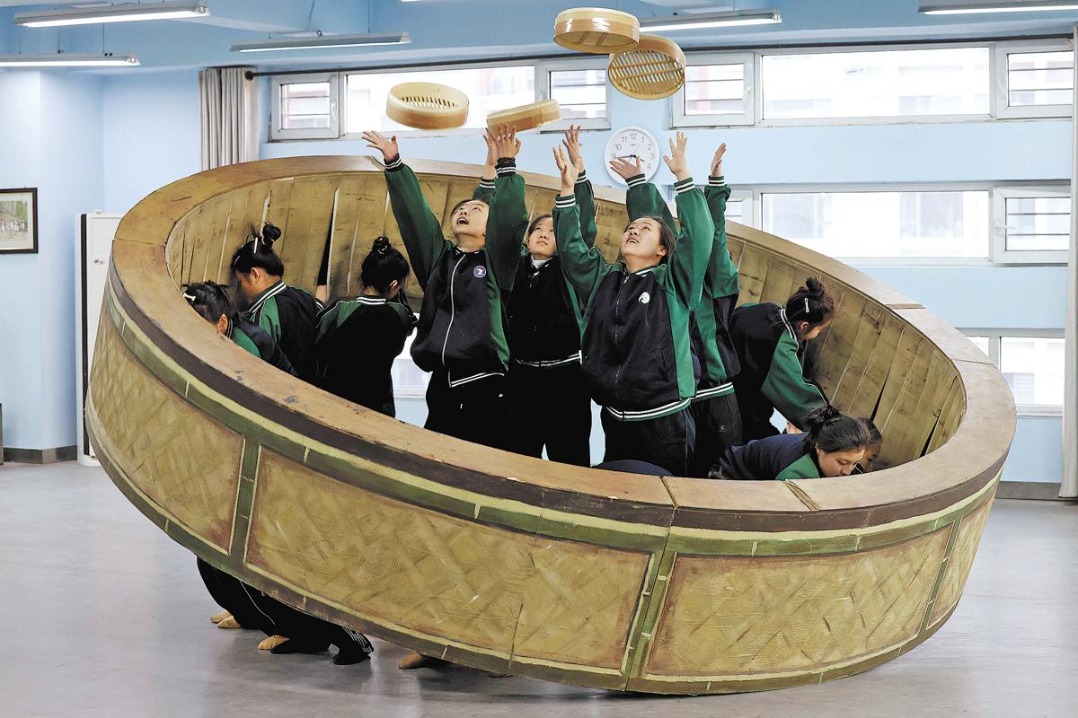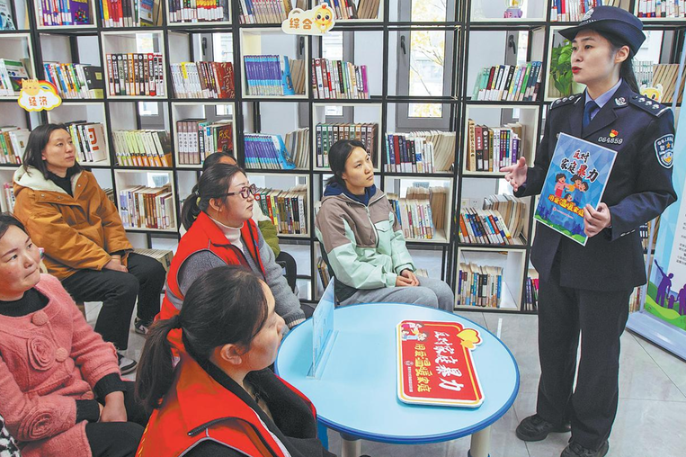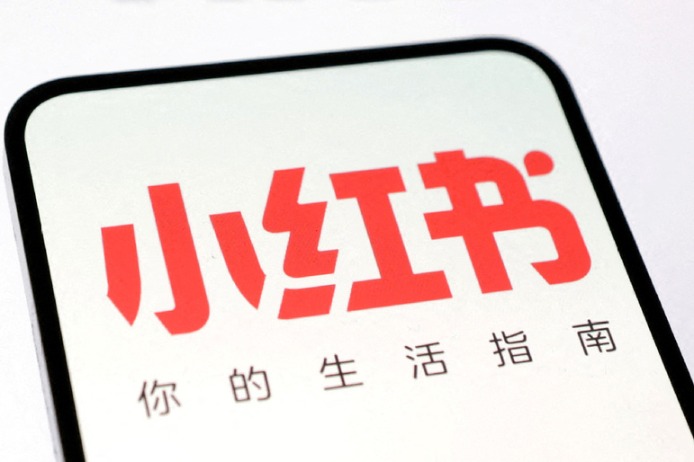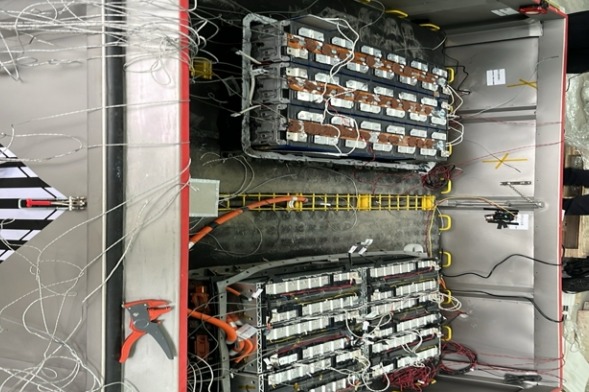V-Day military parade proves to be dream come true

Yao Jiuwei, a marine of the People's Liberation Army Navy, recalled that the first time he considered joining the military was on Sept 3, 2015.
"I was running on a treadmill at my university — Harbin Sport University in Heilongjiang province — and was watching a live broadcast of the grand parade in Beijing that marked the 70th anniversary of the victory in the Chinese People's War of Resistance Against Japanese Aggression. It impressed me deeply and made me truly want to become a soldier. So, after my graduation in 2017, I chose to enlist and was sent to the PLA Navy's Marine Corps.
"In 2019, at our camp, I watched on TV the Oct 1 parade celebrating the 70th anniversary of the founding of the People's Republic of China, and I felt envious of those taking part in the National Day parade, wondering when I could participate in a parade someday. Now, I am here, training for the coming parade. It feels like my dream is coming true," he told China Daily in a recent interview at a military compound on the northwestern outskirts of Beijing.
Yao, now an officer of the PLA Navy's Marine Corps, was selected several months ago as one of two members from his company to participate in the parade on Sept 3, which marks the 80th anniversary of the victory in the Chinese People's War of Resistance Against Japanese Aggression (1931-45) and the World Anti-Fascist War. The event will be the country's 19th military parade since the People's Republic of China was founded in 1949 and the second V-Day parade.
During the parade on Sept 3, troops — selected members of the PLA and the People's Armed Police Force, as well as China's militia and reserve service — will line up in formations along Chang'an Avenue in Beijing, and they will be reviewed by President Xi Jinping, who is also general secretary of the Communist Party of China Central Committee and chairman of the Central Military Commission.
A total of 45 marching soldier units, land weaponry groups and aircraft squadrons are set to take part in the parade.
Yao's assignment is to work with tens of officers and soldiers picked from across the armed forces to carry honorary flags representing time-honored combat units that fought in the war against Japanese invaders.
"The flag I will carry in the parade was conferred to an infantry company — the predecessor of my present company — in September 1939 for its soldiers' heroic performance in a fierce battle that eliminated many Japanese aggressors. Actually, the company was established in May 1928 and had distinguished itself in battles even before the 1939 engagement," the veteran marine emphasized.
"Carrying this flag through Tian'anmen Square means a lot to my company and me. It is a symbol of recognition and acknowledgment of my unit's glorious history and has become a great inspiration to my fellow officers and soldiers. It will be recorded in the company's history book and will definitely generate endless energy to propel us into combat training with full effort," he said.
According to Yao, over the past eight years, he has witnessed his company's rapid transformation, characterized by diversified missions and overseas deployments.
"Thanks to the use of digital platforms and upgraded hardware, we are now capable of operating in all types of environments and safeguarding our motherland's overseas interests. Personally, I have been to the Gulf of Aden and East Africa with the Navy's escort fleet, and I have seen a lot of conflicts and unrest. All of this has taught me that the world is not always at peace and faces many troubles. It is China that always promises its people peace and stability. I am grateful to the fallen soldiers who died fighting the invaders because their sacrifice brought us peace and freedom," the marine said.
Yao added, "Thanks to my overseas deployments, I had the opportunity to witness China's rising strength on the global stage. I can now proudly tell you that whenever you need help on foreign soil, you can count on the motherland, and it will always offer firm support."
He noted that there is a small ceremony that the flagbearers attend each morning during training days: sharing the story behind each flag with other members of the temporary team.
"Every morning, one of us stands in front of the others, holding the honorary flag and telling the others about the accomplishments for which that flag was awarded to their unit. This activity is intended to pass on the fighting spirit of each flag to all of us.
"I am tasked with organizing the ceremony every morning, so many of my fellow carriers told me they love this arrangement. One of them told me that his eyes filled with tears as he listened to those heroic deeds in battle. He said he could envision the valiant soldiers giving their lives to fight against enemies," Yao recalled.
Talking about flagbearing skills, he said that besides hard and repeated training, carriers have developed useful techniques.
"For example, I made a small tool that allows us to develop a kind of muscle memory for the proper angle between the hand and the flagpole. After a period of practice, it proved to be effective and has been adopted by all carriers," Yao said.
After the parade, the officer said, he will return to his company and share the flags' stories and training skills with his troops.
Pilots' aspirations
Wei Xing, a bomber pilot from the PLA Air Force, said he will fly his aircraft as part of a bomber formation during the coming parade.
"Flying in a parade is quite challenging — it requires skill, full attention, flawless teamwork and quick responsiveness. It is a test of how well your daily training has prepared you," said Wei, one of the Air Force's elite bomber aviators and commander of a bomber regiment.
"To better prepare for each flight, we have made detailed plans covering every flight maneuver, and we do extensive ground training. Up in the air, the entire crew must work closely to ensure the mission is accomplished smoothly," he explained.
Participating in the parade will help pilots like Wei improve their airmanship and strengthen overall operational capability.
"In the past, the Chinese military didn't have advanced weaponry, but Chinese soldiers never succumbed to challenges and hardship. Now, with cutting-edge hardware, we, today's service members, will march toward victory confidently and proudly," the pilot said.
Kang Kai, a female fighter aviator with the Air Force, said that flying a domestically built, advanced fighter in the parade is not only a personal honor but also a chance to fulfill a commitment she made 13 years ago to her predecessors.
"In March 1952, 14 female pilots from the Air Force, the first Chinese women trained to fly since the founding of New China in 1949, operated six transport planes to fly through Tian'anmen Square. The event was witnessed by Chairman Mao Zedong and other top leaders. In 2012, the Central Military Commission held a massive ceremony in Beijing to mark the 60th anniversary of their historic flight, and I was honored to attend it," she recalled.
During the event, some of the first 14 female aviators shared stories and memories about flying in the Air Force, especially the March 1952 flight over Tian'anmen Square, Kang said.
"Their eyes filled with tears when recalling that once-in-a-lifetime moment. They were old, with gray hair, yet full of energy and enthusiasm as they remembered that glorious morning. It was like they had returned to their youth and the years of struggle to realize their dreams."
On learning that Kang was from the newest batch of female pilots at that time, some of the first women fliers held her hands and said, "You young girls were born in a good era and have such a good opportunity to operate advanced aircraft. You must work hard and earn new honor for generations of female aviators."
Kang said, "I promised I would do my best to serve the motherland."
According to Kang, the unit she serves with has been undergoing extensive transformation for the past two years in terms of hardware and training standards.
"The new combat plane poses demanding challenges to female aviators. I spared no effort to exercise my body and hone my flight skills, and successfully passed stringent tests to qualify for the new jet. This will be my first parade, and it is a great honor to fly the Air Force's combat jet, undergo inspection by the country and its people and demonstrate the strength of new-generation female pilots," Kang said.
Veteran soldiers
The Sept 3 parade will mark the sixth time for Ding Hui, a veteran tank driver who has served in the PLA Ground Force for 32 years, to take part in a national parade, and the fifth time he drives the first tank that will lead other ground vehicles.
"I am the chief trainer of all ground vehicle drivers and the commander of the foremost tank group. I train trainers, who then train other vehicle drivers. Though I have taken part in five massive parades and driven the first tank in four of them, I still feel huge pressure because we set an even higher standard to ensure that all tanks move in perfect synchronization with each other. So, we need repeated training and precise coordination," he said.
A major challenge for Ding is that many tanks and armored vehicles were recently delivered to troops, so operators must quickly familiarize themselves with the new equipment.
"The knowledge and skills we acquire from parade training will enable us to build combat capability as soon as we return to our barracks. As I often tell my men, a parade is another type of combat exercise," the tank driver said.
Ding recalled that when he joined the military and was assigned to a tank regiment 32 years ago, the first tank he drove was a Type 59, China's first domestically built battle tank.
"Since then, I have used 18 types of tanks across three generations. I am a witness to the history of the Ground Force's hardware development over the past three decades. Compared with previous generations, our new tanks are much more advanced, with tremendous leaps in automation and information processing capabilities. Figuratively speaking, the new tank now has a brain," Ding noted.
In his view, a parade in the PLA is not only an occasion to honor fallen heroes but also a reminder of the tradition of always following orders from the commander-in-chief.
"All of us are ready to move from the training range to the battleground once the top commander gives the order," he said.
Cao Guanyi, a civic affairs worker from Qitaihe, Heilongjiang province, said the Sept 3 parade will be her second time goose-stepping along Chang'an Avenue.
"I took part in the National Day parade in October 2019 when I was a military member serving with a communications brigade of the Air Force," said Cao, who serves as head of a group of militiawomen during the training period for the coming parade.
She noted that many of the militiawomen participating in parade training are former servicewomen.
"Although many of us are no longer military personnel, we are bound by a sense of responsibility and mission that has never changed. No matter how our roles change, we are committed to building and safeguarding our motherland," she said.
Inside the parade training compound, the living and training arrangements for militiawomen are identical to those of military personnel, according to Cao.
"Although we are civilians, we adhere to the high standards observed by soldiers. We are determined to display our full enthusiasm and fighting spirit as we march before the people and the nation," she added.







Today's Top News
- IMF revises up China growth forecast for 2025 on policy support
- China looks to strengthen LAC relations with release of policy paper
- Group of Friends of Global Governance established
- China's CPI up 0.7% in November
- Governance of China an inspiring path
- Sharper focus on expanding demand seen






























